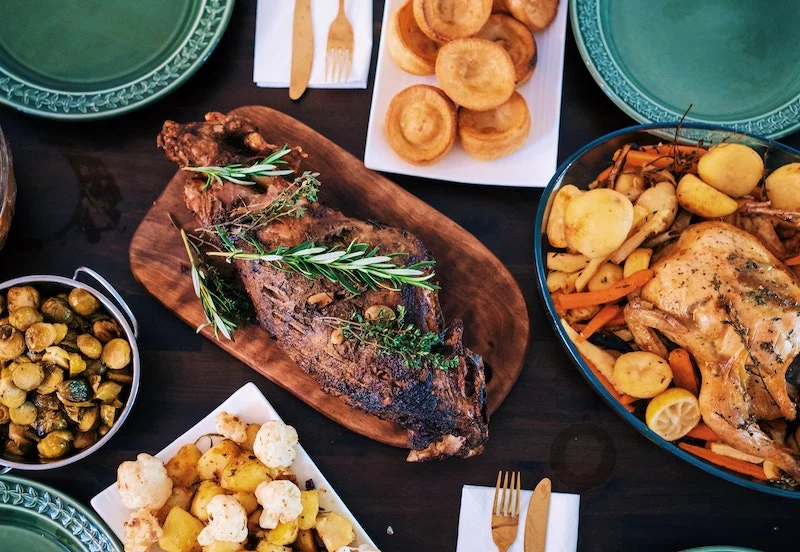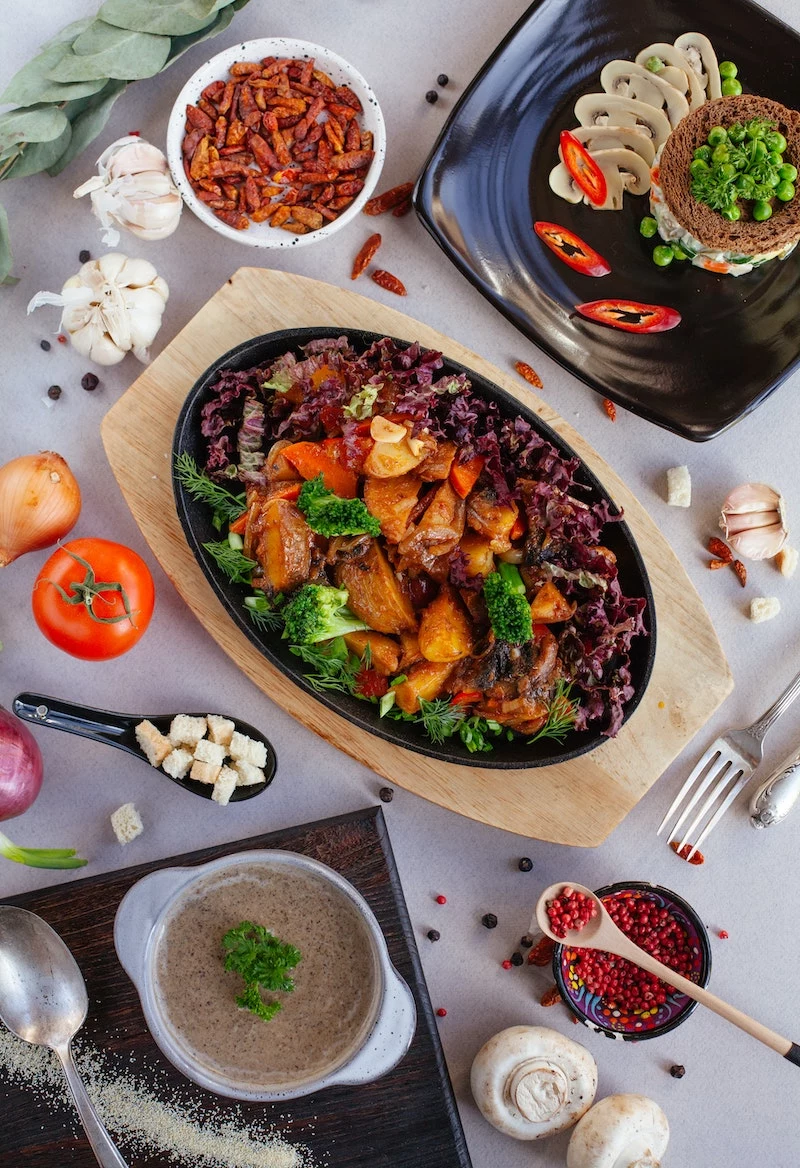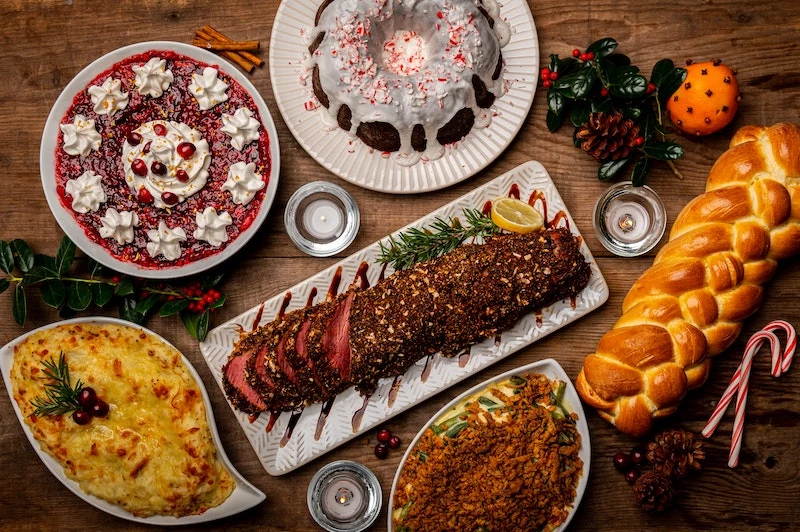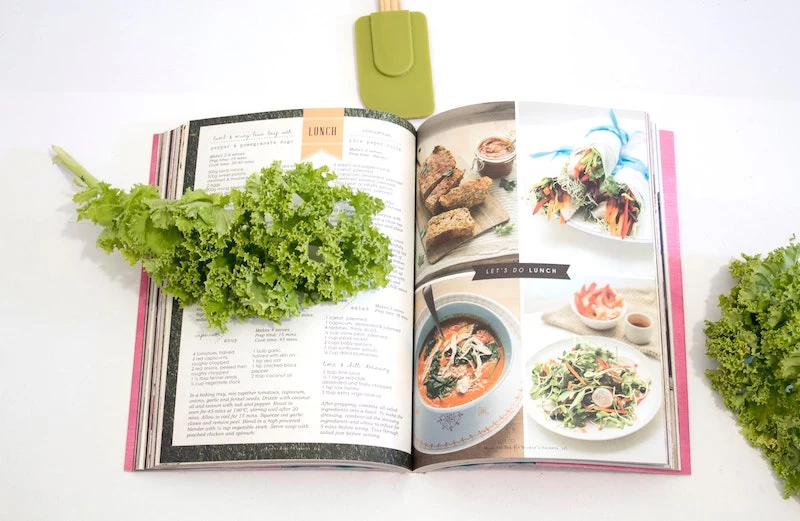Your Stress-Free Holiday Dinner Playbook: A Chef’s Guide to a Flawless Feast
I’ll never forget the first time I was in charge of a big holiday dinner. I was fresh out of culinary training, brimming with confidence, and planned a menu that was… let’s just say ambitious. The result was pure chaos. Timings were a mess, the kitchen looked like a disaster zone, and I spent the entire evening chained to the stove instead of actually talking to my family. The food was okay, but I totally missed the whole point of the gathering.
In this article
- First Things First: Your Guests and Your Vibe
- Borrowing from the Best: Timeless Holiday Traditions
- Nailing Your Centerpiece and Sides
- The Professional’s Timeline: Your Holiday Battle Plan
- Wanna Get a Little Fancy? Pro Moves for Ambitious Cooks
- The Most Important Ingredient: A Quick Word on Safety
- Inspirational Gallery
That night taught me something crucial that no textbook ever could: a great menu isn’t just about impressive food. It’s about having a rock-solid plan that lets you, the host, actually be present and enjoy yourself.
After years in professional kitchens and now coaching home cooks, I’ve honed a system for tackling big meals. It’s all about doing the right work at the right time. So on the big day, you’re not scrambling—you’re calmly executing the final steps. My goal is to share that pro framework with you, so your food is unforgettable and you get to make memories, too.

First Things First: Your Guests and Your Vibe
Before you even dream of recipes, you need to set the foundation. In the restaurant world, we call this the ‘concept.’ It’s the big idea that makes your meal feel cohesive instead of like a random buffet. And it all starts with your guests.
A few weeks out, send a simple message. This isn’t just polite; it’s a critical safety step. I usually say something like, “Hey, I’m starting to plan the holiday menu! Please let me know if you have any serious allergies, dietary restrictions, or major dislikes I should know about.”
Honestly, this is non-negotiable. A severe nut allergy isn’t a preference, it’s a health risk. Knowing this stuff upfront changes everything, from the ingredients you buy to how you prevent cross-contamination. If a guest is celiac, for example, I know to grab gluten-free soy sauce, double-check my broth ingredients, and use a separate cutting board. It’s just part of being a responsible host.

Once you have that info, you can pick a theme. This makes every other decision a thousand times easier. Are you going for:
- Classic Comfort: Think nostalgic family favorites—the dishes that taste like childhood.
- A Culinary Trip: Maybe a rustic Italian feast, a classic French celebration, or even a cozy Polish supper.
- Modern & Bright: Moving away from heavy roasts to something lighter, like perfectly cooked fish with vibrant, seasonal veggies.
Being honest with yourself here is key. A complex French meal for a crowd is a massive undertaking for one person. It’s always better to nail a simpler menu than to struggle through an overly ambitious one.
Borrowing from the Best: Timeless Holiday Traditions
Looking at how different cultures celebrate is a goldmine for inspiration. These menus have been perfected over generations, so you know they work.
For instance, the Italian-American Feast of the Seven Fishes is a stunning seafood-centric meal. It might start with salt cod salad, move to baked clams and calamari, then a pasta with clam sauce, and end with a whole roasted fish. A quick heads-up: this menu relies on very fresh seafood, which can get pricey, so you might want to check market prices beforehand. It also involves a lot of last-minute cooking (you can’t fry calamari in advance!), so it’s a great choice if you have a helper or two in the kitchen.

Then you have the Polish Wigilia supper, a beautiful, symbolic meal. It’s traditionally meatless and features twelve dishes. You’ll find things like a clear beet soup (barszcz) with mushroom dumplings, herring, and pierogi. From a chef’s point of view, this menu is a dream for prepping ahead. The pierogi can be made and frozen weeks in advance, and the soup often tastes even better the next day. It’s perfect for a host who wants to minimize day-of stress.
And of course, there’s the French Réveillon. This is all about indulgence and luxury—oysters, smoked salmon, foie gras, and a beautiful roast goose or capon. It’s less about huge quantities and more about top-tier ingredients and precise cooking. Because of the cost of ingredients, it’s often best suited for smaller, more intimate gatherings.
Nailing Your Centerpiece and Sides
The main course is where the pressure hits, but a little science makes it foolproof.

For a Perfect Bird (Turkey, Goose, or Chicken):
The eternal challenge is keeping it moist. The lean breast meat cooks way faster than the dark meat in the legs. The pro solution? Brining.
Soaking the bird in a saltwater solution (a brine) makes it absorb moisture. The salt also changes the protein structure, helping it hold onto that moisture during cooking. For a 12-15 pound turkey, a good starting point is 1 cup of kosher salt and 1/2 cup of brown sugar dissolved in a gallon of water, plus any aromatics you like (peppercorns, bay leaves, orange peel). Let it soak for 12-24 hours in the fridge.
Heads up! A classic rookie mistake is using regular iodized table salt. Don’t do it! It contains anti-caking agents that can give your beautiful bird a metallic taste. Stick with kosher salt or sea salt for a clean flavor.
For a Flawless Roast (Beef or Lamb):
Here, the goal is a deep brown crust and a perfectly pink interior. The secret is managing heat with a technique called the reverse sear. Instead of searing first, you cook the roast in a low oven (around 225-250°F) until it’s about 10-15 degrees below your final target temperature. Then, you sear it in a screaming-hot pan right before serving. This gives you way more even cooking and a perfect crust.

Good to know: For a perfect medium-rare, pull the roast from the oven when your thermometer reads 120-125°F. After a quick sear and a short rest, it will land right in that perfect 130-135°F zone.
Getting Your Sides Right: The Art of Balance
Side dishes aren’t just filler; they’re there to make the main event shine. Think in terms of balance. If you have a rich, fatty prime rib and creamy potatoes, you desperately need some acid to cut through it all. A simple green salad with a sharp vinaigrette or some tangy pickled cabbage will cleanse the palate and make every bite of the rich food taste even better.
Texture is just as important. If everything is soft, the meal feels one-note. Add some crunch! Think roasted Brussels sprouts with crispy bits, crisp-tender green beans, or a good crusty bread.
Here’s a quick challenge for you: Look at your planned menu right now. Do you have something rich, something acidic, and something with crunch? If not, the easiest fix is to add a simple green salad with a sharp lemon vinaigrette. Boom, balance!

The Professional’s Timeline: Your Holiday Battle Plan
This is it. This is what separates a smooth, fun day from a stressful nightmare. In pro kitchens, this is our prep list, our holy grail. So, seriously, print this section out and stick it on your fridge.
Two Weeks Before:
- Finalize your menu and guest count.
- Write out your master shopping list, organized by store section (produce, dairy, meat, pantry) to save you time.
- Order any specialty meats NOW. A specific-sized prime rib or a fresh goose needs to be ordered from the butcher well in advance.
One Week Before:
- Go shopping for all non-perishables: flour, sugar, spices, wine, canned goods, butter, etc.
- Check your gear. Do you have a big enough roasting pan? A reliable meat thermometer? Enough serving dishes? Now is the time to find out.
Three to Four Days Before:
- If you bought a frozen turkey, it’s time to move it to the fridge to thaw. The rule is about 24 hours for every 4-5 pounds. A 16-pounder needs a full four days. Put it on a tray to catch drips!
Two Days Before (Prep Day 1):
- Make your brine and let it cool completely.
- Make desserts that get better with time, like cheesecake.
- Chop your base vegetables (onions, carrots, celery) for stuffings and sauces.
- Make the cranberry sauce. It’s always better after a day or two.
One Day Before (The Big Prep Day):
- Get that turkey into the brine.
- Assemble casseroles (like scalloped potatoes or green bean casserole) but don’t bake them. Cover and refrigerate.
- Wash and dry your salad greens. Make the vinaigrette.
- Set the dining table! Getting plates, glasses, and silverware out of the way is a huge time-saver.
- Write out your day-of cook schedule with actual times. (e.g., 3:00 PM: Turkey in. 4:30 PM: Potatoes on to boil. 5:15 PM: Casseroles in.)
Holiday Eve: Execution Day!
Today is just about following your plan. Put on some music and trust your prep work. The final hour is the busiest, but your schedule is your guide. Remember to let your roast rest for 20-30 minutes after it comes out of the oven. That rest period is your golden window to make the gravy, reheat sides, and toss the salad.
Wait, Not Doing Turkey? How Your Timeline Changes…
Great question! If a big bird isn’t your centerpiece, your prep will look a little different.
- For a Beef Roast: The timeline is less intense. Most of the work is on the day of cooking. You can still make sides ahead, but the roast itself doesn’t need days of thawing or brining. Your prep will be more focused on the day before and the day of.
- For the Feast of the Seven Fishes: This is the opposite. It’s very prep-heavy on the day of. You can make sauces and some cold salads the day before, but the frying and searing has to happen right before serving for the best results. This is a menu where having a friend to help you in the kitchen makes all the difference.
Wanna Get a Little Fancy? Pro Moves for Ambitious Cooks
If you’re feeling confident, here are a couple of techniques that can really elevate your meal.
Sous Vide for Genuinely Perfect Protein: This involves vacuum-sealing food and cooking it in a precisely controlled water bath. It takes all the guesswork out of doneness. You can cook a beef tenderloin to a perfect medium-rare hours ahead of time, and it will just hold there, impossible to overcook. Before serving, you just give it a quick, hard sear in a hot pan for that beautiful crust. It used to be a high-end restaurant thing, but you can grab a great consumer-grade immersion circulator for between $100 and $200 at most kitchen supply stores or online.
Building a Real Pan Sauce: After roasting meat, don’t you dare wash that pan! Those brown, stuck-on bits (called the ‘fond’) are pure gold. Pour off the extra fat, put the pan over a burner, toss in some chopped shallots, and then deglaze with a splash of wine or brandy, scraping up all those flavorful bits. Let it reduce, add good-quality stock, and simmer until it thickens. A swirl of cold butter at the end makes it glossy and beautiful. A quick tip: If your sauce tastes bitter, you may have burned the fond while deglazing. Keep the heat on medium and work quickly!
The Most Important Ingredient: A Quick Word on Safety
In a pro kitchen, safety is everything. A gorgeous meal means nothing if it makes someone sick. These are the rules.
First, prevent cross-contamination. Raw poultry is the biggest culprit. Use a dedicated cutting board (I like plastic ones you can bleach) and wash your hands, knife, and the board in hot, soapy water immediately after. Never let raw meat juice touch anything that will be eaten raw, like salad.
Second, respect the “temperature danger zone” (40°F to 140°F), where bacteria grow fastest. Keep hot foods hot and cold foods cold. And this brings me to my most important point: The single best tool you can buy for both safety and perfect results is a $20 instant-read digital thermometer. Don’t guess if your chicken is done. Know. If you don’t have one, go buy one from any kitchen store or online. It’s non-negotiable.
Finally, if a guest has a severe allergy, take it seriously. It might be safest to just eliminate that allergen (like nuts or shellfish) from the entire menu. Your guest’s safety is way more important than having pecans in the salad.
In the end, planning a big holiday meal is an act of love. Your detailed plan is what allows you to share that love without losing your mind. The work you do in the days leading up is a gift to your future self—the self who gets to be a calm, present host, connecting with the people you care about instead of being a slave to the stove.
Inspirational Gallery
The single most common mistake home cooks make with a holiday roast? Slicing it too soon. A large roast needs to rest for at least 20-30 minutes, allowing the juices to redistribute for a tender, flavorful result.
The one tool that separates pros from amateurs: A razor-sharp chef’s knife. A dull knife doesn’t just make prep work tedious; it bruises herbs, squishes vegetables, and is far more dangerous as it can slip easily. Before your big cook day, consider getting your primary knife professionally sharpened—it’s a small investment that pays huge dividends in speed and safety.
Can you really make great gravy before the bird is even roasted?
Absolutely, and it’s a game-changer. Chefs do it all the time. Simply roast a few turkey wings or necks (your butcher can supply these) with mirepoix (onion, carrot, celery) until deeply browned. Deglaze the pan, add chicken or turkey stock, and simmer for an hour. Strain this flavour-packed base, and you can finish your gravy on the day-of in minutes by whisking in a little roux and the drippings from your actual roast. No last-minute floury panic.
Mini-Comparison: The Great Potato Debate
Russets: High in starch and low in moisture, they break down into a light, fluffy, and absorbent texture. Ideal for a classic, smooth mash that drinks up butter and cream.
Yukon Golds: A medium-starch potato with a naturally buttery flavour and creamy, dense texture. They hold their shape better, perfect for a richer, more rustic mash (even with skins on).
For the ultimate mash, many chefs use a combination of both.
- Perfectly cooked turkey, every time.
- No more guesswork for steaks or roasts.
- Instant confidence in the kitchen.
The secret? Not a recipe, but a tool: a digital instant-read thermometer. A model like the Thermapen ONE gives an accurate reading in one second, eliminating the risk of over- or under-cooking your expensive centerpiece protein. It is the best investment a serious home cook can make.
Create a signature drink for the evening that you can mix in a large batch before guests arrive. A pitcher of Spiced Cranberry Mule (vodka, ginger beer, cranberry juice, and a squeeze of lime) or a non-alcoholic Winter Citrus Punch not only feels special but also frees you from playing bartender all night. Set it up with a bucket of ice and a garnish station with orange twists and rosemary sprigs.
According to a Stanford University study, household food waste increases by about 25% during the holiday season.
This often starts with over-buying. Instead of guessing, use a simple portion planner: for a main protein like turkey, budget 1/2 pound (225g) per person (bone-in weight). For side dishes like potatoes or stuffing, plan for about a cup per guest. This small planning step significantly reduces waste and eases the strain on your budget.
Plating isn’t just for restaurants. You can give your holiday meal a visual upgrade with a few simple tricks.
- Work with odd numbers: Three scoops of mash or five spears of asparagus are more visually appealing than even numbers.
- Create height: Don’t lay everything flat. Lean slices of meat against a mound of stuffing.
- Garnish with purpose: A sprinkle of flaky sea salt (like Maldon) and fresh, chopped parsley or chives adds colour, texture, and a final burst of flavour.
What’s the best wine for a holiday feast?
With so many flavours on the table—rich meat, tart cranberries, savoury gravy, sweet vegetables—the key is versatility. Avoid overly tannic or overpowering wines. A medium-bodied, fruity red like a Pinot Noir or Gamay (the grape of Beaujolais) is a crowd-pleaser that won’t clash with the food. For white wine lovers, a dry but aromatic Riesling or a lightly oaked Chardonnay from a cooler climate can beautifully bridge the gap between the turkey and the various sides.
The Final Hour Checklist: Your food is resting, and guests are 60 minutes away. What now? Run through this quick list to ensure a smooth service.
- Warm the dinner plates in a low oven (around 150°F / 65°C). Hot food on cold plates is a cardinal sin!
- Reheat any make-ahead sides.
- Quickly whisk and reheat the gravy.
- Fill water glasses on the table.
- Light the candles and press play on your dinner playlist.










